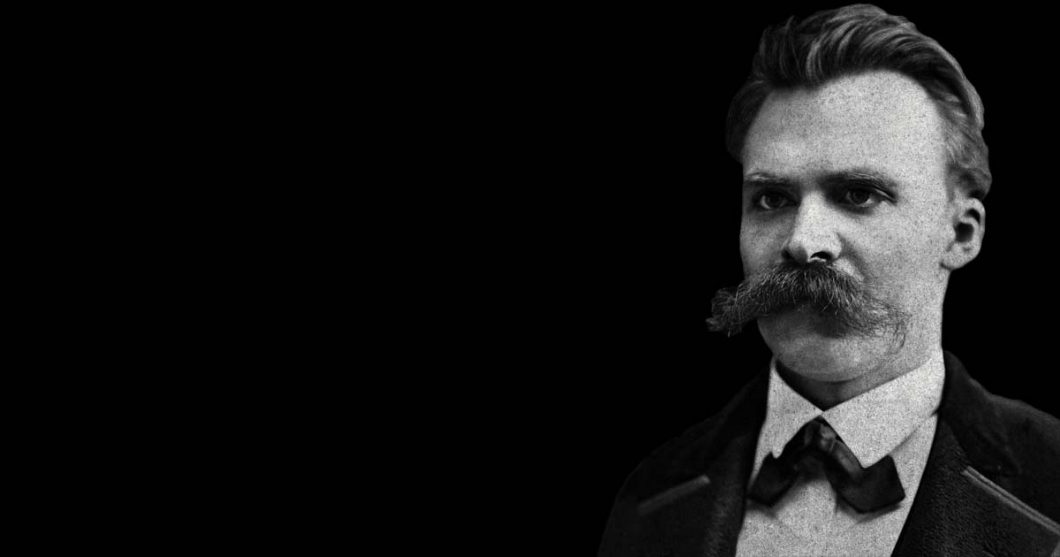Jordan Peterson is easy to caricature, but his teaching is deeper than most people realize, and offers existential lessons we need today.
Between Philosophy and Prophecy
To borrow a Nietzschean phrase, there are “a thousand and one” ways to read Nietzsche. Heinrich Meier, a well-known German scholar of political philosophy, takes a Straussian path, the way of reading pioneered and practiced by the late Leo Strauss (1899-1973). This path involves several characteristic features. It approaches texts—the texts of “the greatest authors” at least—with the greatest respect and it lavishes enormous care on them. This exegetical care ranges from word counts and thematic analysis to closely following the action of a text. It studiously avoids “proof-texting,” i.e., lifting a sentence or passage out of its context and declaring it “the meaning” of the text. The entire text must be considered, the possibility of dialectical development entertained. The first responsibility of the exegete is alert docility. This is the golden path to insight and understanding.
Thematically, the Straussian way focuses principally on the duality and duel of faith and reason, the claims of the gods and the city versus those of autonomous reason. Typologically, this entails consideration of the peaks of the respective poles, the “types” of “the philosopher” and “the prophet” (as well as lesser types such as “the poet,” “the gentleman,” and “the moral man”). Typically, the reading involves a “dialectical contest” between views and positions.
All of these Straussian features figure prominently in Meier’s recently translated book, a close reading and dense interpretation of Nietzsche’s Thus Spake Zarathustra. To enter into such a book, it is wise to follow the lead of the author and start with the title and subtitle. Meier begins by posing a question, “What is Nietzsche’s Zarathustra?,” which is followed by a lapidary indication, “A Philosophical Confrontation.” The initial “what” turns out to be significant, even essential. Instead of Martin Heidegger’s famous question, Who is Nietzsche’s Zarathustra?, Meier argues that the what question—the Socratic question—is more appropriate to the character and more revealing of the author’s intention.
To be sure, the “what” question encounters a strange object in Zarathustra! In Meier’s reading, Nietzsche’s central character (and one must never forget that “Zarathustra” is a creation of the author) is ambiguous, he contains a duality. He is, or aspires to be, a philosopher, the first true philosopher, and he is, or aspires to be, a prophet, the first true prophet. What awesome ambitions, indeed! The chief drama of the work is the working out of the exigencies of each, each by itself, each in relation to the other. What is a philosopher? “I am!” answers Zarathustra. “Someone who dispels illusions and ceaselessly seeks greater insight into the world and the self.” What then is a prophet? “Someone who lays down the law—the tablets of values—for humanity.” What, then, are you, Zarathustra? Two or One? (“Two or One?” is how Meier characteristically puts the matter, and it is not hard to detect a Platonic undertone here, one that follows on the heels of the Socratic question.)
From this dual characterological core, Meier closely follows as Nietzsche connects the ambiguous character to a variety of audiences and presents him in a variety of circumstances. Each encounter or exchange reveals something of Zarathustra, each one reveals something to Zarathustra, and together they move the action along, which Nietzsche himself characterizes as tragic: “Incipit tragoedia.” At this point, the reader is inclined to suspect that the dual burden that Zarathustra has taken upon himself proves too much for one man, hence the tragic character of the text. Meier conditionally affirms this interpretation, again following Nietzsche’s lead in characterizing the text. For Nietzsche had also written “incipit parodia.”
The audiences that Zarathustra encounters begin with “the crowds” and then “disciples” (actual and potential). Those two phrases, found repeatedly in St. Matthew’s Gospel (e.g. Matt. 13), indicate another defining feature of the text, its “parodic” character. Thus Spake Zarathustra parodies the Bible, especially in its German Luther translation. Indeed, there are “hundreds of telling allusions, silent citations, and contrasting references connecting the book with the Bible,” counts the indefatigable Meier.
More pointedly, “the parody particularly concerns the four Gospels, the life and teaching of Jesus. For Thus Spake Zarathustra presents Zarathustra as a true Counter-Jesus.” In the parody, the prophetic Zarathustra is on display, one who must surpass the last Great Prophet. In his preaching of the Kingdom, Jesus was “unfaithful to the earth,” turning human beings’ aspirations toward a non-existent Heaven. Along with Plato, he did the most to turn humans from one world—the only world—to a second world, an imagined world of perfection, permanence, and rest. He was the exemplar of the moral consciousness that creates reality after its own heart’s feelings and needs. In contrast, the Overman proposed by the prophetic Zarathustra can be presented as “the meaning of the earth,” the this-world transformation of the human that justifies or “redeems” the ineradicable imperfections of the world. This prophetic exigency presupposes that “God is dead,” and that unless humanity has a new faith, a new lodestar, a new surpassing ambition, it will decline into the contemptible creature, “the last man.”
It’s at this juncture that Meier ventures that
His [Zarathustra’s] tragedy may have its ground precisely in the fact that the parody, driven to its most extreme point, burdens him with what None can accomplish. That he is supposed to unite in himself what cannot be united. Two as One.
While one might think (a Christian certainly would) that the prophetic contest of replacing Jesus Christ is beyond human capacity, Meier places the accent on the incompatibility of the two “personae” and ways of life. Why this is the proper focus can be approached by way of the other One of the Two, the philosopher. He is characterized by a specific form of “the will to power,” “the will to truth.” This will make him skeptical of all authorities and all given answers, it makes him constantly question himself, what he thinks he has understood, and what motivates him. In a later work, Nietzsche calls Zarathustra “a skeptic.” This is meant in a specific way. “The Antichrist says of the “great passion” that rules the skeptic as “the ground and the power of his being” that it uses up convictions and does not subject itself to them: “it knows itself sovereign” (my italics). The philosopher is constantly unsatisfied, constantly questioning reality and himself, and he wills to do so solely on his terms.
The roots and grounds—the original evidences and experiences, the subsequent considerations and critical reflections—of Zarathustra’s atheism are not laid bare for the curious (or critical) reader’s inspection.
His nature therefore does not allow him to whole-heartedly, or whole-mindedly, maintain or rest content with any “conviction” that would be the ground or substance of a prophetic teaching or doctrine. This includes “his own” as a prophet. Here we encounter one of the most distinctive features of Meier’s interpretation. In a set of perceptive observations, he notes that Zarathustra himself never teaches “the Eternal Return of the Same,” and that, after early on proposing “the Overman” as the object of new devotion and aspiration, the philosopher in him decisively refutes it. Two of the most famous “Nietzschean doctrines” were not in fact taught by Nietzsche!
These are not the only, or last, of Meier’s perceptive “catches.” A final one involves the ending, and hence final meaning, of the work. Nietzsche had begun by characterizing it as a tragedy. The ending, however, belies that characterization. Zarathustra is not given a tragic death, broken down by the impossible, or dying for a discredited goal. Indeed, he does not die at all. He lives, and it is left to the reader who has tracked his adventures and growth in self-knowledge to thoughtfully imagine what he will become.
In this task, he resembles the author of the work, Nietzsche himself. Through his literary creation, Nietzsche played out his own dilemma: Philosopher or prophet? Philosopher and prophet? He will go on to provide his own answer in his next two books, “Ecce Homo and The Antichrist, the dyad with which [his] oeuvre comes to a close.” Based on Zarathustra’s clear tendency, whereby the philosopher undermines the works of the prophet, one would expect that he would opt for philosophy. But the biblical and anti-Christ[ian] titles give one pause. His commentator is preparing intensive studies of the final two books.
With respect to his commentator, I end with a question, a tentative answer, and an observation. A number of years ago, Meier strikingly (even shockingly) argued that, in his opinion, Leo Strauss believed he had refuted “revealed religion.” In so doing, he departed dramatically from Strauss’s own explicit teaching, that the two great attitudes of the human soul (“obedient faith” and “autonomous reason”) cannot refute each other. They are fated to coexist in a mutually challenging, yet mutually enriching, relationship. Granting for the moment that Strauss did refute the rational credibility of biblical faith, why would Meier spend so much time and effort on an author and a text that took “the prophet” and prophecy so seriously? One thought comes to mind.
If atheism is the only rational option after Strauss, then it makes sense to pay attention to the thinkers who took atheism for granted, as it were, and tried to think, or rethink, all of life and thought in its terms. While not the only candidate (Machiavelli comes to mind), Nietzsche certainly fits that bill. And Zarathustra does so in a special way. It provides a necessary “literary-philosophical experiment,” by presenting the nature and aims of the oxymoronic “atheist prophet.” How far can atheism go? Can it provide what humanity, or the highest nature, needs? Can it fulfill the prophetic function? Can it do so with a clear—that is, atheistic-philosophical—conscience? In Thus Spake Zarathustra, Nietzsche addressed these questions in a sustained and apparently radical way. Hence his compelling interest for the Straussian exegete, whose Straussianism is more than exegetical.
One, however, cannot help but notice that the enterprise is based upon a petitio principii. Unlike a Socratic dialogue, or a Thomistic questio, Zarathustra is a very self-enclosed dialogue. True, its lead character refers to the leading lights of the entirety of western civilization (and beyond, starting with Zoroaster). But he only does so on his own terms, in his own terms. There’s something fundamentally unphilosophical about this experiment. The roots and grounds—the original evidences and experiences, the subsequent considerations and critical reflections—of Zarathustra’s atheism are not laid bare for the curious (or critical) reader’s inspection. In simply following Nietzsche and the text, Meier departs from Strauss’s own practice and example. Strauss always sought out the roots. Meier stays on what we could call “the extremely complex surface.” Thus, when all is said and done, this very close, careful, and often perceptive commentary falls short of a philosophical commentary. It doesn’t really fulfill its subtitle’s promise.



